Land Invertebrates
Media
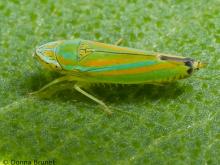
Species Types
Scientific Name
More than 3,000 species in North America north of Mexico
Description
The leafhoppers are a large and diverse family of sap-sucking, hopping insects. You can distinguish them from similar groups of hoppers by the hind legs, which have at least one row of small spines on the hind tibiae (“shins”).
Media
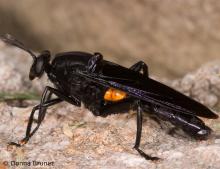
Species Types
Scientific Name
About 80 species in North America
Description
Mydas flies are quite large, and although they resemble wasps, they are harmless. Note that all true flies have only one pair of wings. Also note the clubbed antennae (unusual for flies).
Media
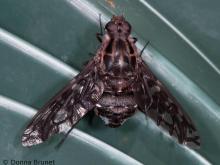
Species Types
Scientific Name
About 800 species in North America
Description
Resembling bees, or sometimes big, fuzzy mosquitoes, bee flies are a family of true flies and are not bees at all. Lacking the ability to sting, their bee mimicry helps them avoid many would-be predators.
Media

Species Types
Scientific Name
More than 900 species in North America north of Mexico
Description
Millipedes, which have two pairs of legs per body segment, are harmless detritus-eaters, move slowly, and curl up defensively when harassed.
Media

Species Types
Scientific Name
Loxosceles reclusa
Description
The brown recluse is a spider whose venomous bite may be medically significant to humans, though a bite is almost never fatal. Brown recluses are most commonly encountered in houses, where they occupy little-used drawers, closets, and other small hiding spaces.
Media
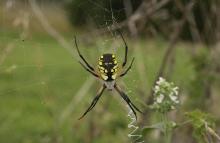
Species Types
Scientific Name
Argiope aurantia
Description
The black-and-yellow garden spider is large but harmless. It sets up large, circular webs in gardens and grasslands. Lucky gardeners can host this remarkable pest exterminator all season long.
Media

Species Types
Scientific Name
Argiope trifasciata
Description
The banded, or white-backed garden spider is slightly smaller than the black-and-yellow garden spider and has a pointier hind end. The abdomen is patterned with many thin silver and yellow transverse lines and thicker black, spotty lines.
Media
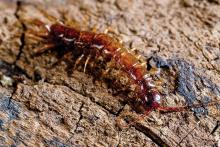
Species Types
Scientific Name
Hundreds of species in North America north of Mexico
Description
Centipedes are familiar to anyone who has overturned rocks and logs, sifted through leaf litter, or dug in the soil. Learn more about Missouri's members of class Chilopoda.
Media
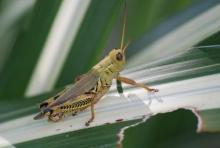
Species Types
Scientific Name
Melanoplus differentialis
Description
The differential grasshopper is familiar to most Missourians. Originally it lived only in wet meadows and creek bottomlands, but with the spread of farms, it has become a pest of many food crops.
Media
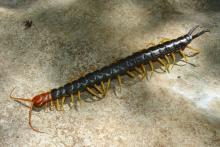
Species Types
Scientific Name
Scolopendra heros
Description
The bright colors of the giant redheaded centipede have a message for you: Handle with great care! It’s of the few centipedes in our state capable of inflicting a painful, venomous bite.
See Also



Media

Species Types
Scientific Name
Cisseps fulvicollis
Description
The yellow-collared scape moth is more often “orange-collared.” And whether you think it looks more like a firefly or a wasp, it’s still a moth!
Media

Species Types
Scientific Name
Nearly 150 species in North America north of Mexico
Description
Slim, delicate plume moths are instantly recognizable by their T-shaped silhouette, long legs, and muted shades of tan and brown. It can be hard to separate the various species.
Media

Species Types
Scientific Name
Pyrrharctia isabella
Description
Not many people know the adult Isabella tiger moth when they see one, but we’re all acquainted with its caterpillar, the woolly worm, or woolly bear.
About Land Invertebrates in Missouri
Invertebrates are animals without backbones, including earthworms, slugs, snails, and arthropods. Arthropods—invertebrates with “jointed legs” — are a group of invertebrates that includes crayfish, shrimp, millipedes, centipedes, mites, spiders, and insects. There may be as many as 10 million species of insects alive on earth today, and they probably constitute more than 90 percent all animal species.





















